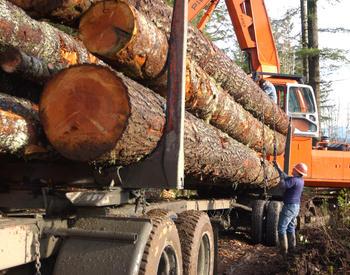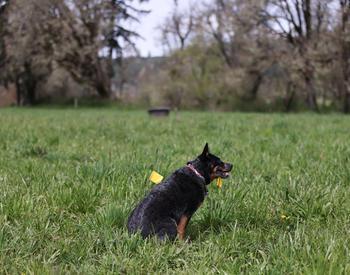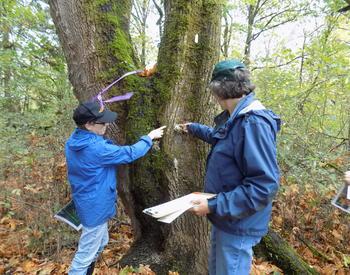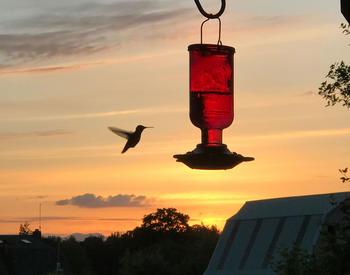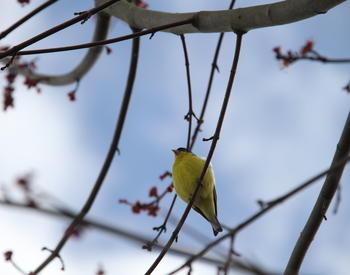Transcript
(upbeat acoustic guitar music)
- Welcome.
In this video we're going
to talk a little bit
about how harvests,
like in this clear cut,
and other forest practices might create
some good pollinator habitat
and also recognize what it is
that makes good pollinator habitat
so that you can do things to improve it
or protect it on your property.
Clear cuts.
Important part of
forestry in Western Oregon
and they're often ugly.
At least many people tell me so,
but probably not if you're one
of Oregon's hundreds of native bees.
In fact, this might
look pretty good to you
if you're one of them.
Many of our native bees do really well
in these disturbed conditions
where we have forests
rebounding after some
disturbance like a clear cut.
So what is it that bees need or like?
Well, two key building
blocks of bee habitat
are nesting resources
and flowering resources.
Let's talk about each.
Nesting resources vary
according to the type of bee
but most of our bees in Western
Oregon are solitary bees.
They have individual nests in homes,
as opposed to the more familiar honey bee
which forms very, very large colonies.
Most of our solitary bees in Oregon
are actually ground nesters
and so they look for and need bare ground
often to dig tunnels in
which to lay their eggs
and raise their brood.
We also have a group of
bees who prefer to nest
in wood debris in little
crevices or tunnels in the wood.
So a lot of the debris
left behind in a clear cut
is actually good nesting habitat
for many different kinds of bees.
And many different plants
also have pithy cores
that can be hollowed out and
used as nesting sites as well.
So the other key building
block for pollinator habitat
is flowering resources.
Obviously bees are using
flowers to collect nectar
and also pollen to feed their brood,
so having a abundance of
flowers of many different types
over a long season is
the best possible way
to provide a diversity of habitat
for a wider variety of native pollinators.
Point here is after a
disturbance like a clear cut,
that site can really be
providing a lot of the habitat
requirements that our
native pollinators need.
Having different species is important
in a number of different ways.
Flower shape is important
because different bees
are built differently,
have different sizes of bodies
and have different sizes of tongues.
And having different types of flowers
and different flower
shapes allows more bees
to take advantage of that resource.
Remember, under the Forest Practices Act,
you're required to successfully
replant forest trees
after a harvest and sometimes
that puts that objective
in competition with the objective
of meeting some habitat
requirements such as pollinators.
So while the disturbance
does create some opening,
some opportunities, some
of our other practices
can actually undermine
some of those advantages
habitat-wise that are created.
For instance, we will often be going on
and doing some weed control
to allow our forest seedlings
to get established and grow.
And how we choose to do our weed control
can have quite an impact
on the floral resources
or the nesting resources that are there
at the site for the pollinators.
It's worth thinking about
the practices you do
in your normal forestry operations,
such as clearing brush, site preparation
and weed control as steps
that you could perhaps modify
to maintain or enhance habitat
quality for pollinators.
(upbeat acoustic guitar music)
This video discusses bee habitat in western Oregon forests and activities you can do to support those habitat needs when completing a harvest operation.
Use pesticides safely!
- Wear protective clothing and safety devices as recommended on the label. Bathe or shower after each use.
- Read the pesticide label—even if you’ve used the pesticide before. Follow closely the instructions on the label (and any other directions you have).
- Be cautious when you apply pesticides. Know your legal responsibility as a pesticide applicator. You may be liable for injury or damage resulting from pesticide use.


